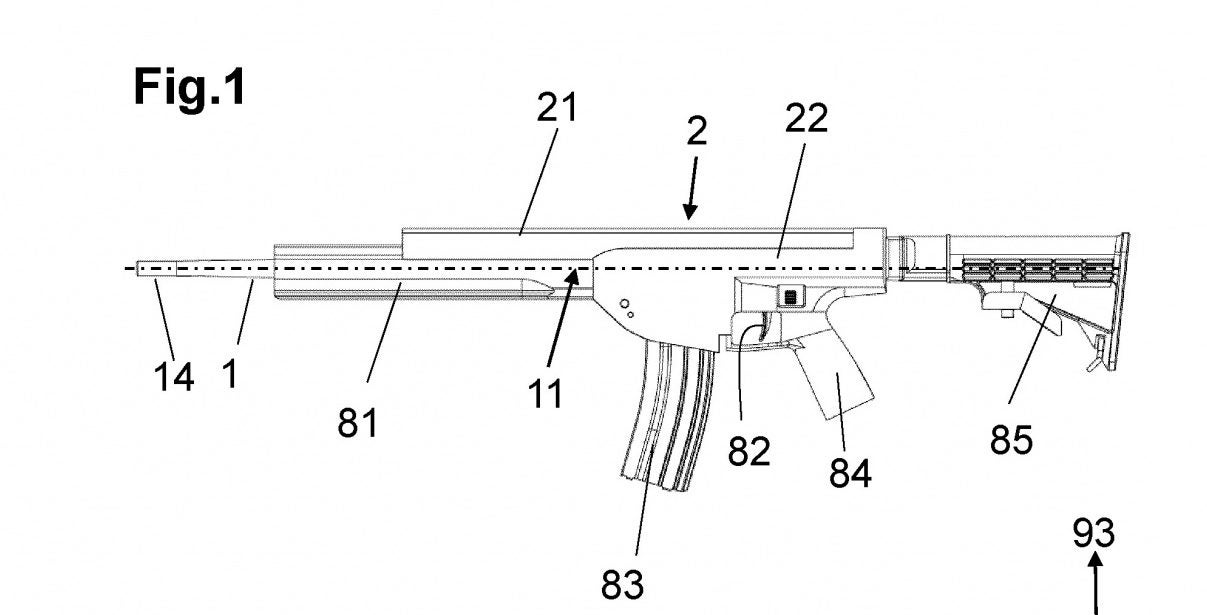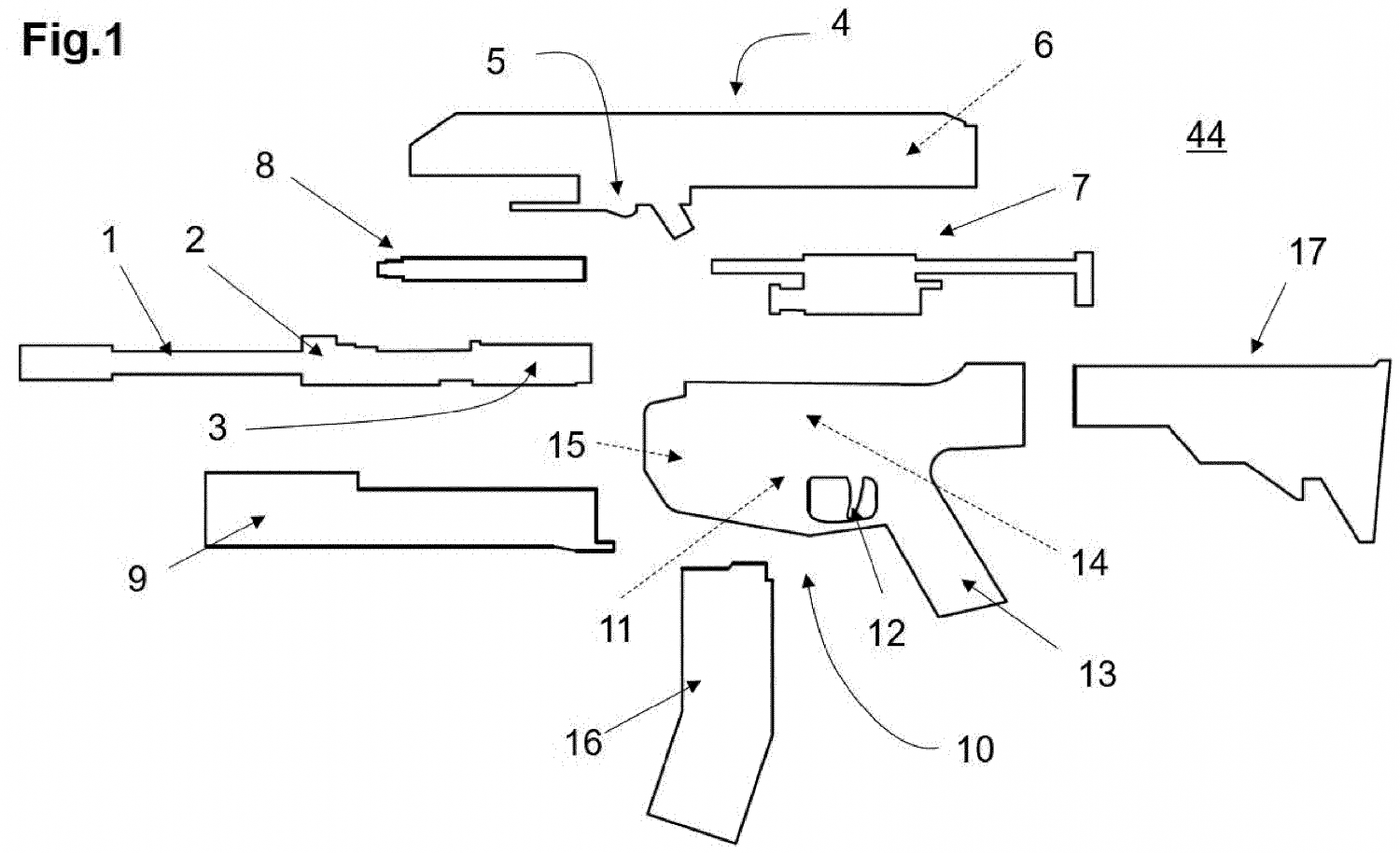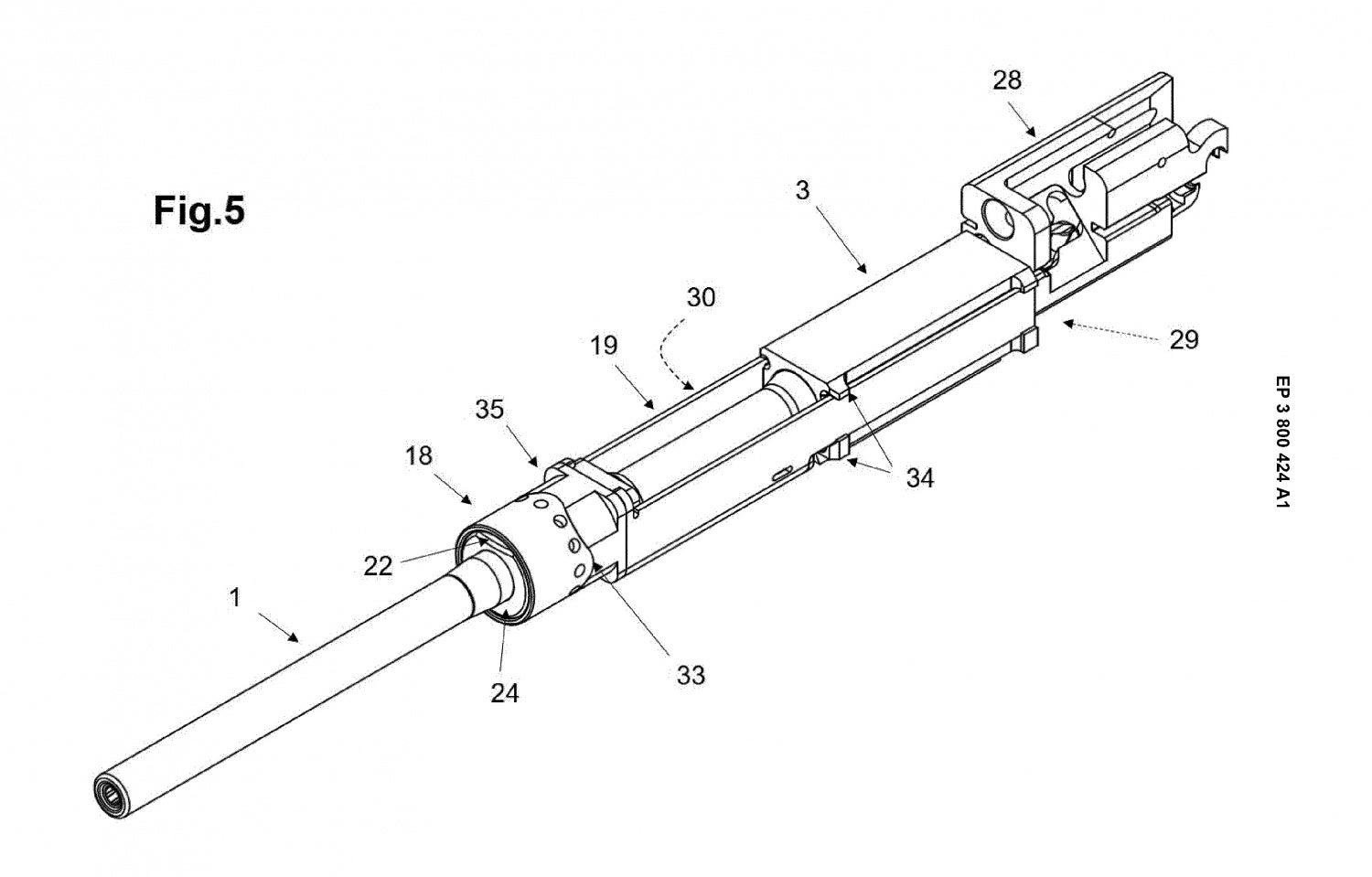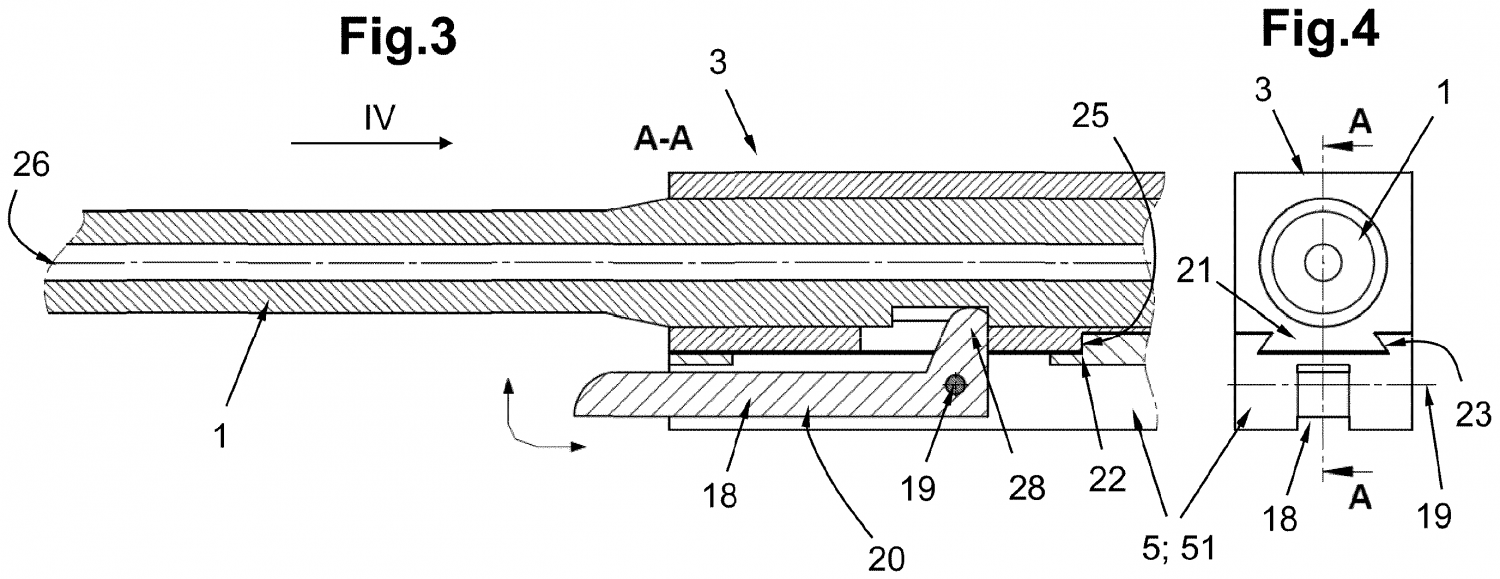It’s often been asked “why don’t GLOCK make rifles?” and time and time again we’ve heard rumours and even had a few hoaxes about a GLOCK Assault Rifle entering the market. But last month a couple of interesting new patents from GLOCK were published. It appears that GLOCK engineers have been hard at work on a rifle-caliber design for at least a couple of years.
Is It Happening? GLOCK Assault Rifle Patents Emerge
Published just last month, the group of patents points towards one or more rifle/carbine designs being developed by GLOCK engineers. In this article, we’ll dig into the patents and examine what we know about GLOCK’s developments and dive into the history of some of its predecessors which have used the new design’s most intriguing feature – its annular gas system.
The principle design seen in the patents features a rotating bolt and bolt carrier based on Eugene Stoner’s influential AR-18 design. The weapon is likely chambered in common rifle calibres and some of the patent drawings suggest a standard 5.56x45mm chambering. The design appears to be principally the work of experienced small arms designer Elmar Bilgeri, perhaps best known for his work on the Steyr Scout Rifle.
Interestingly, the design appears to have an annular mid-length gas piston system while another patent points to the ability to switch out the barrel. The patent doesn’t give away too much detail on what the rifle looks like, instead, it has fairly generic layout diagrams that show a conventional upper, lower, barrel assembly, forend, and bolt carrier group design.
More on Glock:
- A History of Perfection: TFB’s Definitive Guide to all Glock Generations
- BACK TO THE FUTURE: The New GLOCK P80 Classic Edition From Lipsey’s
- US Coast Guard Selects Glock 19 MOS
- Which Subcompact Glock is the Best? Glock 43, 43X, or 48?
- A Gucci Glock Goes to War with Top US General in Afghanistan
Perhaps the most interesting aspects of the rifle’s design are its annular gas piston and its charging handle layout. The rifle has an ambidextrous charging handle located above the barrel, within the forend, which acts on the bolt carrier group but is non-reciprocating – not unlike the classic HK designs. The charging handle patent is assigned to Mario Kastrun.
The Annular Gas Piston
The rifle has a mid-length gas system with an annular, ring-shaped, gas piston head which circles the barrel and acts on a pair of arms or push rods positioned on either side of the barrel which act on the bolt carrier. The gas system is designed to have a stroke length between 20 and 30mm. The annular gas piston has radial gas ports which are angled back towards the receiver.
Below is a diagram showing how the annular gas piston system and its push rods interact with the bolt carrier.
The point of the annular piston and the symmetrical push rods is explained succinctly in the patent:
The symmetrical configuration, in particular that of the gas escape holes 20 and the push rods 19, in cooperation with the slim design, particularly the design of the push rods 19, allows for a significant reduction of the tilting moment acting on the weapon when it is fired.
The theory being that the distribution of these forces and movement within the rifle’s working parts will provide a more stable weapon.
Historical Overview: The Annular Piston
You may be wondering what exactly is an annular piston. Simply put it’s a piston which is positioned around the barrel rather than above it or below it as in traditional systems. The piston moves longitudinally along the barrel when it is acted on by propellant gases leaving the barrel through the weapon’s gas port(s). While the system is less frequently used, the concept has a long history.
Previous rifle designs that have utilised the system include the Walther A115, developed in the mid-1930s. Using some advanced manufacturing techniques and design concepts for the time, the A115 had an annular gas piston assembly surrounded the barrel with a small gas chamber at the fore end.

A Walther A115 Prototype (Rock Island Auctions)
Several years later on the other side of the Atlantic, Jonathan “Ed” Browning developed a new rifle for Winchester – which would become known as the G30 – which used an annular gas system. During World War Two, Walther returned to the annular gas system when developing the Maschinenkarabiner 42(W). The MKb-42(W) competed against Haenel’s less complicated design which eventually became the StG-44. The MKb-42(W)’s annular gas piston acted on a rotating bolt.

vz.52 (Armémuseum)
However, the most successful rifle to feature an annular gas piston is the Czech vz.52, which has a mid-barrel gas port that vents into an annular piston head that then acts on the operating sleeve to engage a pair of push rods that act on the rifle’s bolt. The vz.52 is probably the most combat-proven design to use the system.
The GLOCK Assault Rifle’s Other Features
We can get an idea of some of the other features that might appear on a future Glock rifle from the patents. Like the AR-18 the Glock patents show no buffer tube, like those commonly seen in the AR-15 platform. Unlike the AR-18 the bolt carrier group, however, appears to utilise a single recoil spring, rather than two. The bolt carrier also has a forward extension over the bolt head, much like HK’s roller-delayed blowback designs, which is acted on by the charging handle located over the barrel. The bolt has the standard 7 locking lug configuration but the ejector appears to be a longer component running the full length of the bolt. While the bolt carrier looks to be a complex part to machine, the bolt carrier group, in general, appears to have relatively few small parts.
We haven’t been able to find any patents on the fire control system and the available patent drawings show a fairly generic lower outline. There is, however, a patent for the magazine release, designed by Kastrun, which shows an ambidextrous design. Perhaps the most pressing question, however, is does it take Glock mags? If Glock start producing their own STANAG pattern 5.56x45mm rifle magazines, then the answer is yes.
This article is a brief breakdown of the key features of the design shown in several patents. Check out the patents here:
EP3800427A1
EP3800434A1
EP3800424A1
EP3800423A1
Don’t get too excited just yet as while the patents prove that Glock have been working on a rifle design, it doesn’t mean we’ll be seeing it any time soon. Let us know your thoughts in the comments below, just how excited are you to see a Glock rifle?
 Your Privacy Choices
Your Privacy Choices







